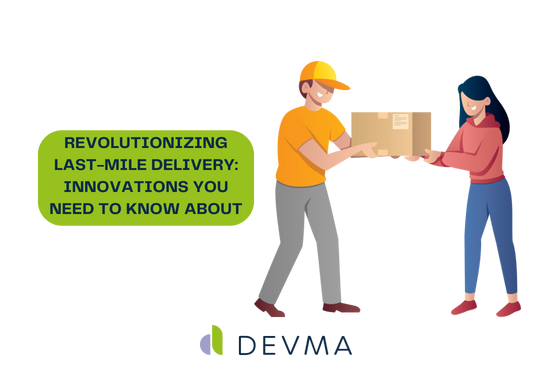Last update: Nov 19, 2024
Revolutionizing Last-Mile Delivery: Innovations You Need to Know About

Table of contents
The last mile was a movie made in 1932, but that isn’t the point of this blog, haha. Today, we’re talking about the world of last-mile delivery and how rapidly it’s been changing. In an era where consumers expect their packages to be delivered yesterday, companies are racing to try and keep up with last-mile delivery solutions that are faster, greener, and more efficient. If not, that one person complains, leaves a bad review, and then wants their money back – we all hate that.
More than this, logistics are also molding the field making some innovations stand out as the real MVPs or game-changers. Here’s a look at the latest breakthroughs that companies should pay attention to.
Autonomous and EV Delivery Vehicles
If you were to ask someone 30 years ago about last-mile delivery, they wouldn’t even know what that is, but if you asked them about autonomous vehicles, they’d think you were crazy. However, in 2024, one of the biggest shifts in last-mile delivery is the introduction of autonomous vehicles, including drones, trucks, and even some delivery bots. Companies like Amazon and FedEx are investing tons of money in autonomous delivery solutions in order to reduce human error, cut costs, and overall make deliveries faster.
In fact, according to a recent McKinsey report, autonomous vehicles could potentially reduce last-mile delivery costs by up to 40% in urban settings by minimizing the need for labor and fuel costs. This could transform the world for metro areas where traffic congestion usually leads to slowed delivery times.
Outside of the world of autonomous vehicles, there’s the world of EVs. People are always valuing eco-friendly and sustainable practices and logistic companies are playing to everyone’s fantasies as they invest in electric and green vehicles to reduce their carbon footprint. UPS and DHL are even transitioning some of their urban delivery fleets to electric vehicles, aiming to create a more sustainable last-mile delivery ecosystem.
Predictive and Real-Time Analytics
Using data to predict the delivery patterns and optimize routes has become key to many businesses as well as those who hawk the tracking codes they get. By taking advantage of big data and machine learning, companies can look at peak delivery times, streamline their dispatching, and minimize delivery delays. For example, last-mile deliver solutions that leverage predictive analytics can know when traffic patterns adjust in real-time.
Gartner predicts that by 2025, 60% of last-mile delivery fleets will rely on analytics to improve on-time delivery rates and customer satisfaction. These analytics are not just a convenience – they’re a competitive necessity in the era of on-demand delivery.
Micro-Fulfillment Centers
Micro-fulfillment centers are just as they sound: small, localized distribution centers that have gained a ton of momentum as companies look to shorten delivery distances and time. In situations where these centers are closer to the customer, businesses can cut delivery times significantly and create a faster delivery experience.
Walmart and Target are prime examples of successful micro fulfillment center integration. For businesses of all sizes though, adopting this strategy allows them to deliver on the promise of same-day or even same-hour delivery.
The Future of Last-Mile Delivery
So, what’s the future look like? Well, faster would be the best way to explain it. The innovations reshaping last-mile delivery are more than just trends at this point; they’re legit strategies for businesses that want to thrive in today’s ever-changing logistics landscape. Companies that adopt autonomous vehicles, predictive modeling for delivery routes, electric fleets, and even micro-fulfillment centers are setting themselves up to be ahead of the game 3-5 years from now.
As logistics and product management/fulfillment changes, staying on top of these changes will be a key to your success.